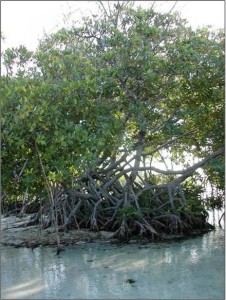 Seeing as it’s been around for years and years, it’s no surprise the Everglades has quite a bit of archaeological heritage within it. Native people have lived in the Everglades long before European settlers came to Florida and began settlements. Below, we’ll share some information with you on shell works, which is one of the archaeological heritage sightings you can find throughout the Park that give visitors insight into the Everglades’ past.
Seeing as it’s been around for years and years, it’s no surprise the Everglades has quite a bit of archaeological heritage within it. Native people have lived in the Everglades long before European settlers came to Florida and began settlements. Below, we’ll share some information with you on shell works, which is one of the archaeological heritage sightings you can find throughout the Park that give visitors insight into the Everglades’ past.
You know those tree islands that the Everglades is known for? Archaeologists now believe these are not actually naturally occurring in the Park, but rather were created by people thousands of years ago.
Shell Works
The originally people who inhabited the Southwest Florida area were the Calusa tribe; they were comprised of many small villages and utilized resources around them to surviving. Their main source of food came from fishing, and they made tools from shells and other materials that could be found around them. They created hammers, picks, and scrapers from conch, clam, and oyster shells; they also used shells for jewelry and ornaments.
When the Calusa were done with the shells and tools, they piled them to create shell works, which are large scale, planned formations of piled oyster shells that formed built villages. It is uncertain what the purpose of the shell works was, but archaeologists think they may have created these piles to separate domestic and sacred spaces in the villages. These shell piles created high ridges, mounds, crescents, platforms, canals, and courtyards. In the book “Pre-Columbian Architecture in Eastern North America,” author William Morgan suggests that shell works were created as networks to link communities and resources, along with dividing separate spaces.
In time, the piles of shells (also mixed in with food leftovers, bones, etc.) created an organic environment ideal for plant life to grow on top of them and be above the water level line.
These shell works were a collection of a variety of different shell and earth work accumulations. One of shell accumulations within the works is known as a shell midden, which is essentially a “dump” and tells the story of the people who lived there. These middens formed over time from discarded shells over generations. In the Park, the shell works are large, meaning the people had to have organized and planned the mounds and formations. These large mounds weren’t only used as leftover piles, but they also created mounds to build housing and spaces on.
Based on the remains found in the Park, archaeologists have dated the Everglades’ shell works to back to 1000 BC to 1500 AD.
Interested in checking some of these shell works out? They can be found throughout the park. A great way to see these mounds and get around the Everglades is on an airboat tour. Captain Mitch’s Airboat Tours can bring you around places in the wetland that you will not be able to gain access to on foot. To book an airboat tour through the Everglades, contact Captain Mitch today at 800-368-0065 or click here.






